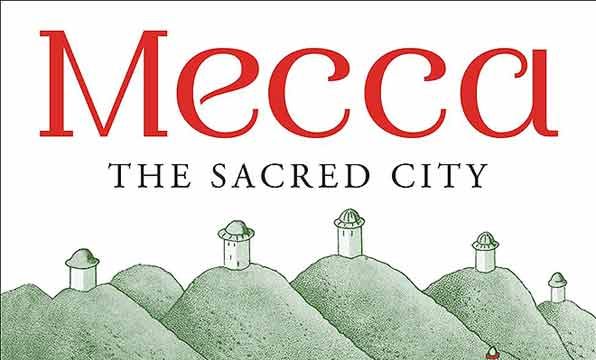I doubt if Ziauddin Sardar would have quite anticipated the trouble the House of Saud would heap on themselves when his remarkable book Mecca: The Sacred City glistens on the book shelves in all its golden inlay.
It is a book of lasting interest which has suddenly become so topical in the context of the chaos that now engulfs the region of which Mecca must remain the centre. Mecca was not always calm, as Sardar’s narrative sketches establish, but it was always the null point that promised tranquility.
“Kaaba agar che dhaya, to kya jaae ghum hai Sheikh? Yeh Qasre dil naheen ke banaya na jaayega!”
(Kaaba was destroyed and rebuilt many times in history; it is not like the heart, which once destroyed cannot be rebuilt) wrote the 18th century poet Mirza Rafi Sauda.
What infuses Mecca with extraordinary life is the author’s special bond with the city. All Muslims with minimal imagination dream up a bond with Mecca. Scholars have spent years in libraries and archives to reconstruct the various aspects of Mecca, traversing all the Abrahamic religion.
What makes Sardar’s book special is that he actually lived and worked in Jeddah, Mecca and Medina, soaked in the market places, the tea shops and the dwellings in Islam’s two holiest cities.
This is not all. Imitating Ibn Battuta, who set out for Haj from Tangiers and never returned home, Sardar followed the traditional caravan route, at least a part of it, the 80km from Jeddah to Mecca on a donkey bought from a Bedouin for $1,000 after some expert and hilarious haggling.
A camel would have fulfilled his nostalgia for ancient routes more completely, but he found the ship of the desert just too pricey for pilgrims. It was doing roaring business in the Dubai camel races!
This is just a flavour of the tomfoolery that provides relief in a narrative of great insight, décor and faith.
Sardar’s family migrated from Pakistan to settle in London. Thus, he gained the advantage of distance. He was in the metropolitan centre which had controlled his country as well as the founders of Saudi Arabia whose job it was to maintain Mecca and Medina.
Then he zoomed in. The sacred city was virtually under his microscope. He received a job offer. He was invited to become part of a team at the newly established Haj Research Centre located on the campus of the King Abdul Aziz University in Jeddah.
Mecca was visited by 1,00,000 pilgrims annually when camel routes were fashionable. But after the discovery of oil on an industrial scale, the new means of transport were to disgorge a minimum of three million pilgrims annually. This was the explosion that the Haj centre would study.
Then, the Iranian revolution created turbulence in the region. This coincided with the siege of Mecca, a catastrophic event the Saudis and the Americans were pressed to quell. US special troops could not enter the mosque: they were non-Muslims. How could the American military enter the sacred mosque? There was only one way. A cleric converted them to Islam. The subterfuge saved Islam’s holiest shrine.
For a delightful read, pick up Ziauddin Sardar’s Mecca.




